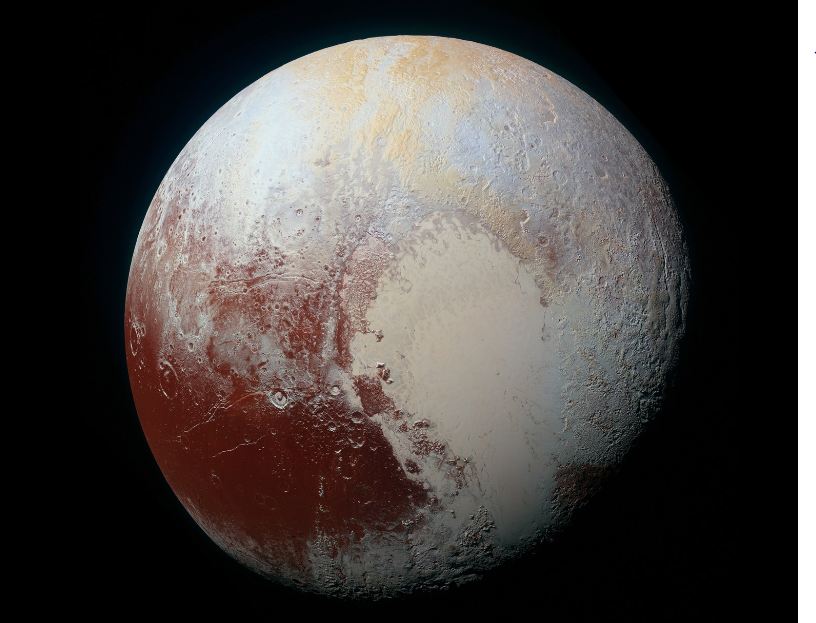Ever since it was first spotted by NASA’s New Horizon spacecraft in 2015, the frozen heart-shaped feature on Pluto has attracted some of the brightest minds in the astronomy community worldwide — especially astrogeologists.
The particularly intriguing aspect about the ‘heart’ is its western nicknamed Sputnik Planitia, a deep basin comprising three types of ice — frozen nitrogen, methane, as well as carbon monoxide, as explained by NASA.

Needless to say, the unique attributes of the dwarf planet became the subject of several research studies that tried figuring how and when Sputnik Planitia came into existence. Most of these studies usually tend to suggest that it is a depression created by the powerful impact of a smaller celestial body. However, a new theory disputes that school of thought by proposing a different idea.
According to this new theory originally published in the journal Nature, Sputnik Planitia may have formed much earlier in Pluto’s history than previously thought, and that the feature we are seeing today is probably the result of billions of years of evolutionary process.
“The main difference between my model and others is that I suggest that the ice cap formed early, when Pluto was still spinning quickly, and that the basin formed later and not from an impact,” Douglas Hamilton, a professor of astronomy at the University of Maryland and lead author of the study, said in a press release.
“The ice cap provides a slight asymmetry that either locks toward or away from Charon when Pluto’s spin slows to match the orbital motion of the moon.”
Hamilton’s theory suggests that the initial location of Sputnik Planitia was due to Pluto’s unusual climate, as well as its spin axis which tilted by 120-degrees unlike Earth which if tilted by only 23.5-degree. Subsequent simulation of the climate and temperature on Pluto showed that when averaged over Pluto’s one revolution around the Sun (~248 Earth years), the 30 degrees north and south latitudes emerge as the coldest places on the dwarf planet.
According to Hamilton, the ice there (including at the center of at the center of Sputnik Planitia) may have formed normally.
In addition, the new model also demonstrates that even a relatively small ice deposit can attract more ice to form around it. That implies that even if the basin is probably losing mass over centuries, the ice in the region keeps accumulating, thus affecting Pluto’s center or mass.
